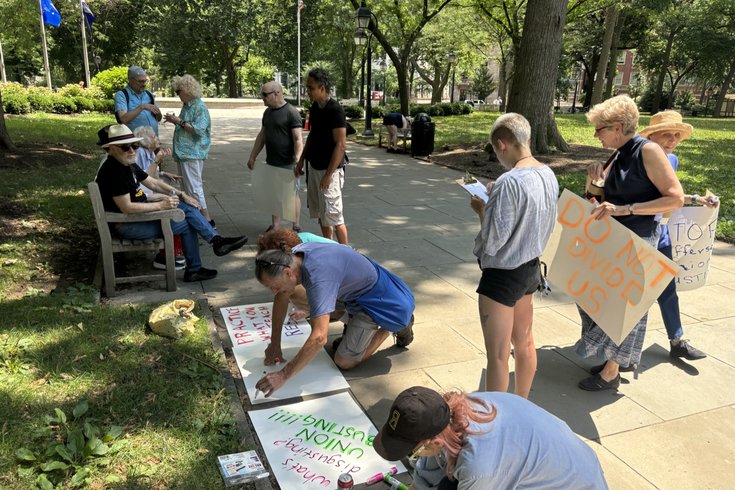
July 15, 2024
 Provided Image/Jefferson Standardized Patients United
Provided Image/Jefferson Standardized Patients United
Standardized patients, a group of workers who act as patients for medical students, held a rally Monday at Washington Square Park. After unionizing, they say the university isn't bargaining in good faith.
A group of workers at Thomas Jefferson University who are paid to simulate patients for medical students celebrated a victory earlier this year when they won a union election. But six months later, they say they're struggling to be taken seriously in bargaining sessions.
Known as standardized patients, these actors are assigned medical conditions and memorize traits about their characters, including eating and exercise habits, sexual preferences and hobbies. Sometimes, they're even asked to act angry or make it more difficult for students to get the necessary info. After the exam, they give feedback to the students.
"It's really good practice for people in the field because a lot of times there are communication barriers," said Andy Molholt, a professional musician and standardized patient. "People are embarrassed about something, people don't want to disclose information for one reason or another, and it takes the doctor asking the right kind of question in order to elicit the right kind of response."
Standardized patients, at Jefferson are represented by Office and Professional Employees International Union Local 32 and won a union election in January. Now, though, they say the university isn't bargaining in good faith, and they held a rally at Washington Square Park on Monday in protest, with speakers including state Sen. Nikil Saval (D) and state Reps. Rick Krajewski (D) and Ben Waxman (D).
The standardized patients, who are W-2 employees, unionized in the hopes of getting a raise to $30 per hour; they're currently paid $20 hourly, a rate that hasn't changed since 2008. Comparatively, the University of Pennsylvania pays standardized patients $22 per hour and Temple University pays $25. The union is also seeking improvements to building safety, cleanliness and health care.
Jefferson declined to voluntarily recognize the union in November before the approximately 130 workers won the election. Now, Moholt said the law firm hired by Jefferson, Cozen O'Connor, wants to limit eligible members to around 50 or 60. That number comes from who was able to vote in the election, which was determined by how many hours they had worked in the past few months.
The standardized patients say that's an unfair metric since their work and hours aren't consistent. In fact, some wanted to unionize in the hopes of getting more standardized hours. The union also claims that an attorney from Cozen O'Connor referred to the standardized patients as "volunteers" during the last bargaining session and that the school forced them to move their rally off Jefferson property, where it was originally planned.
"It just feels unfair because I think we're a huge part of the medical education process, and it just feels like Jefferson isn't really recognizing that," said Rich Lanci, a standardized patient and substitute teacher. "It just really makes us want to fight more, if anything."
Jefferson declined to answer questions about the bargaining, but said that it remains committed to working with the standardized patients.
"Jefferson is committed to negotiating in good faith for a responsible and realistic contract that provides the standardized patients represented by OPEIU with fair, competitive wages and benefits and allows Jefferson to continue delivering an unparalleled educational experience to our students," the university said in a statement. "We have made arrangements to ensure there is no interruption to patient care or educational services during this demonstration."
Cozen O'Connor did not return a request for comment on the rally and bargaining sessions.
Most standardized patients work at multiple schools in the area and sometimes can see as many as 12 students in a row.
For Chris Roche, a standardized patient and theater worker, the union is important because there aren't many industry guidelines for standardized patients. But with many working at multiple schools, he thinks one successful union will set off a ripple effect. Already, he said, he's seen other schools increase their pay and training hours.
"It's a soft but complicated skill set that it takes, and it feels very countered to the modern society that we live in," Roche said. "It requires a lot of in-depth listening and a vulnerability that, if you don't have a system that is proactive in keeping people safe and secure, it makes it harder to do the job because we're portraying real-life people who are going through the worst time in their life."